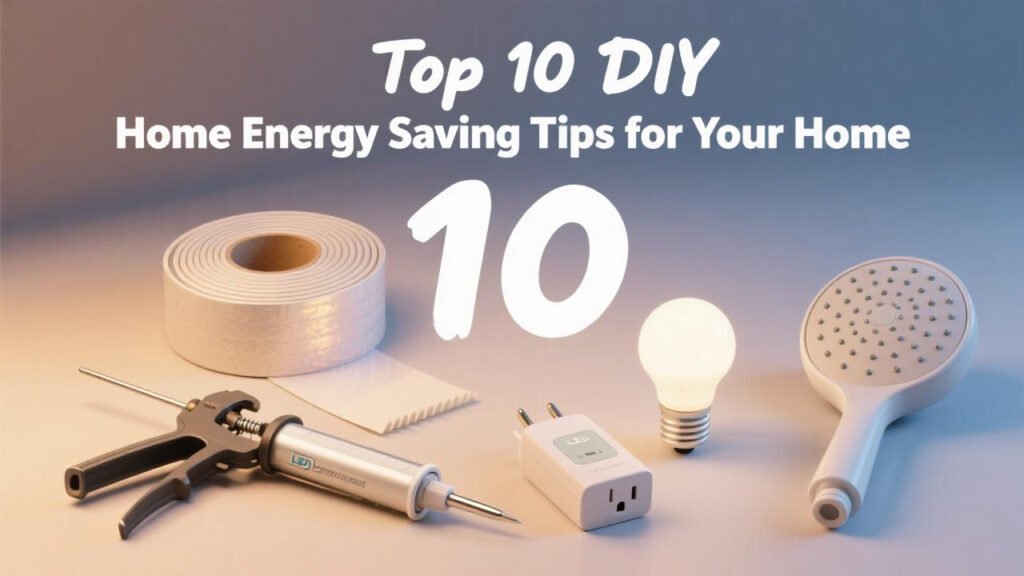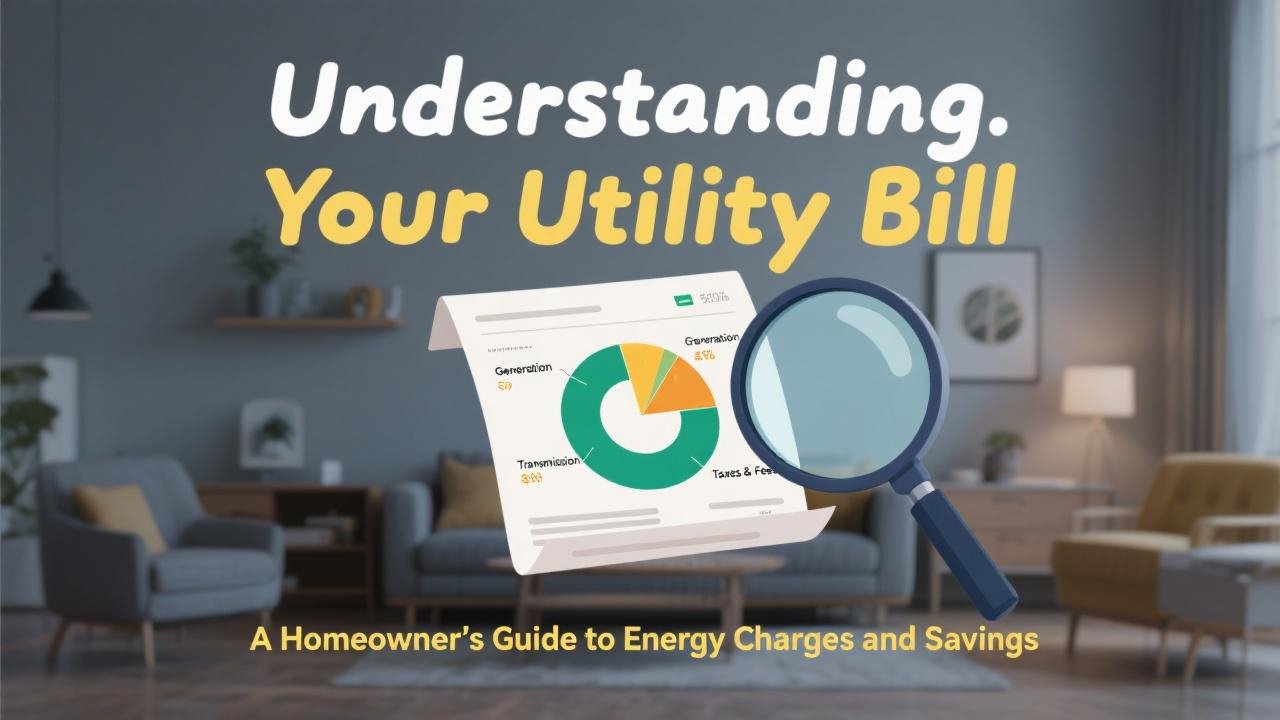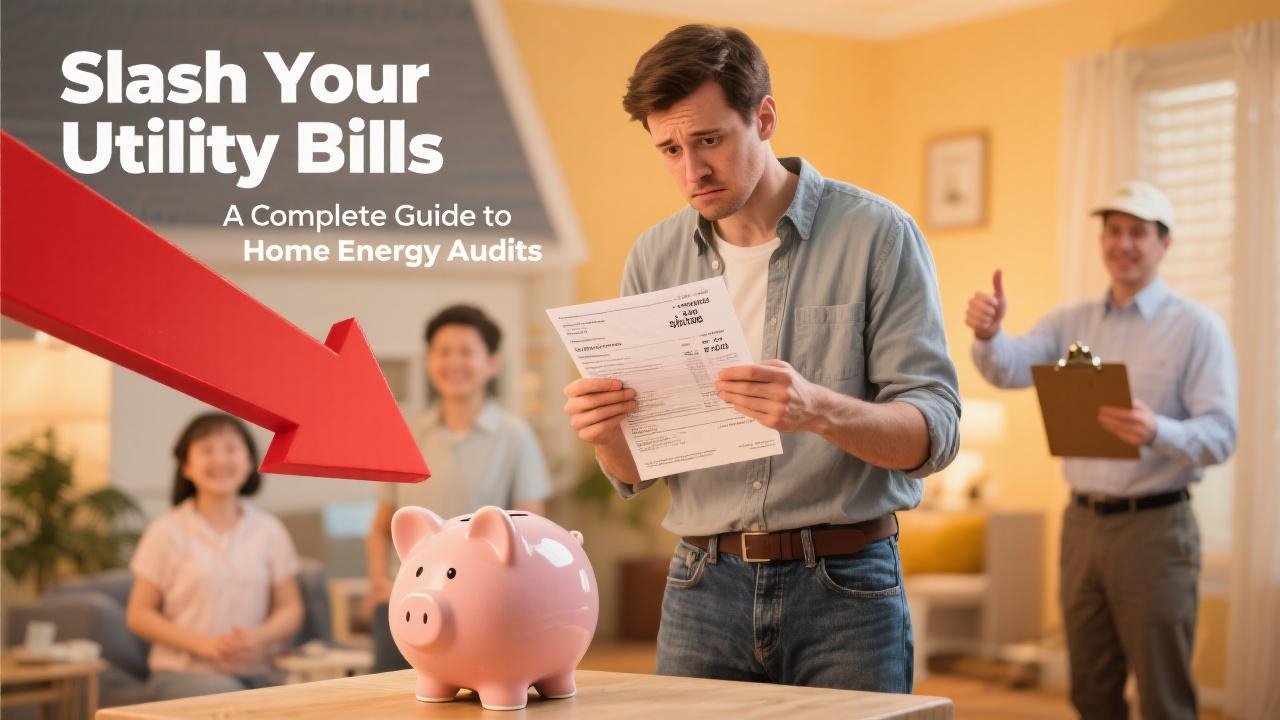Empowering Yourself to Cut Energy Waste and Costs
Everyone wants to save money on their energy bills and reduce their environmental impact. While major upgrades like new windows or a high-efficiency heat pump can make a big difference, there are numerous simple, do-it-yourself (DIY) energy-saving measures you can take around your home in 2025 that don’t require a huge investment or professional help. These small changes can add up to significant savings over time and make your home more comfortable. This guide provides ten practical DIY tips to boost your home’s energy efficiency, going beyond the classic advice of just turning off the lights.
1. Seal Air Leaks Around Windows and Doors
- The Problem: Small cracks and gaps around windows, doors, and other openings can let heated air escape in winter and cooled air escape in summer, forcing your HVAC system to work harder. This is a major source of energy loss.
- DIY Solution:
- Weatherstripping: Apply self-adhesive foam or rubber weatherstripping to the movable parts of windows and doors to create a tighter seal when they are closed.
- Caulking: Use caulk to seal gaps around stationary window and door frames, and where siding meets the foundation or window/door frames.
- Door Sweeps: Install sweeps at the bottom of exterior doors to block drafts.
- Impact: Can save 10-20% on heating and cooling costs.
2. Insulate Your Hot Water Tank and Pipes
- The Problem: Your water heater works to keep water hot, but an uninsulated tank can lose heat to the surrounding air, especially if it’s in a cold basement or garage. Hot water pipes also lose heat as water travels to your faucets.
- DIY Solution:
- Water Heater Blanket: Purchase a pre-cut insulating blanket designed for water heaters and install it according to the manufacturer’s instructions (be careful not to cover vents on gas or oil units).
- Pipe Insulation: Use foam pipe sleeves or insulating pipe wrap on accessible hot water pipes, especially the first few feet coming out of the water heater.
- Impact: Can reduce standby heat losses by 25-45% and save 7-16% annually on water heating costs.
3. Lower Your Water Heater Temperature
- The Problem: Many water heaters are set to 140°F by default, which is often hotter than necessary and can pose a scalding risk.
- DIY Solution: Set your water heater thermostat to 120°F. For every 10°F reduction in water temperature, you can save 3-5% on water heating costs.
- Caution: If you have a dishwasher without a booster heater, you might need to keep the temperature slightly higher for optimal cleaning, but 120°F is generally sufficient for most household needs.

4. Replace Your HVAC Air Filter Regularly
- The Problem: A dirty or clogged air filter in your furnace or heat pump restricts airflow, forcing the system to work harder and use more energy. It can also lead to poorer indoor air quality and system malfunctions.
- DIY Solution: Check your HVAC filter monthly and replace it (or clean it, if it’s a reusable type) at least every 1-3 months, or as recommended by the manufacturer.
- Impact: Can lower your HVAC system’s energy consumption by 5-15%.
5. Use Window Coverings Strategically
- The Problem: Windows can be a significant source of heat loss in winter and heat gain in summer.
- DIY Solution:
- Winter: Open curtains and blinds on south-facing windows during sunny days to let in passive solar heat. Close them at night to retain warmth.
- Summer: Close curtains and blinds, especially on south and west-facing windows, during the day to block solar heat gain and reduce the load on your air conditioner.
- Consider using insulating curtains or cellular shades for even better thermal performance.
- Impact: Can significantly reduce heating and cooling needs.
6. Unplug “Energy Vampires” or Use Smart Power Strips
- The Problem: Many electronics and appliances (TVs, game consoles, chargers, coffee makers) continue to draw power even when they are turned off. This is known as “phantom load” or “vampire power.”
- DIY Solution:
- Unplug devices and chargers when not in use.
- Use smart power strips that can automatically cut power to devices when they are not actively being used or can be controlled remotely.
- Impact: Can save an average household $100 per year.
7. Optimize Your Refrigerator and Freezer Settings
- The Problem: Refrigerators and freezers run 24/7 and can be significant energy consumers.
- DIY Solution:
- Temperature Settings: Set your refrigerator to 37-40°F and your freezer to 0-5°F.
- Check Door Seals: Ensure the door seals are tight. Close the door on a piece of paper; if you can pull it out easily, the seal might need cleaning or replacement.
- Keep Coils Clean: If your refrigerator has exposed condenser coils (usually on the back or bottom), gently clean them with a vacuum brush attachment once or twice a year. Dirty coils make the unit work harder.
- Keep Full (But Not Overstuffed): A relatively full refrigerator and freezer operate more efficiently than empty ones, but don’t overpack them so much that air can’t circulate.
- Impact: Proper settings and maintenance can improve efficiency.
8. Wash Clothes in Cold Water and Air Dry When Possible
- The Problem: Heating water for laundry accounts for about 90% of the energy your washing machine uses. Clothes dryers are also major energy consumers.
- DIY Solution:
- Wash most of your laundry in cold water using cold-water detergents.
- Clean the lint filter in your dryer before every load to improve airflow and efficiency.
- Air dry clothes on a line or drying rack whenever weather permits.
- Impact: Significant savings on water heating and drying energy.

9. Use Your Thermostat Wisely (Even if it’s Not “Smart”)
- The Problem: Setting your thermostat too high in winter or too low in summer wastes energy.
- DIY Solution:
- Set Back Temperatures: Manually lower your thermostat by 7-10°F when you’re asleep or away from home for several hours.
- Dress for the Season: Wear warmer clothes indoors in winter and lighter clothes in summer to be comfortable at more moderate thermostat settings.
- Impact: You can save as much as 10% a year on heating and cooling by simply turning your thermostat back 7°-10°F for 8 hours a day from its normal setting. (While this refers to programmable thermostats, the principle applies to manual setbacks too).
10. Check and Improve Attic Insulation Access/Hatch
- The Problem: Your attic access door or hatch is often poorly insulated and sealed, creating a significant pathway for heat loss in winter and heat gain in summer.
- DIY Solution:
- Insulate the Hatch: Attach a piece of rigid foam board insulation or fiberglass batt insulation to the attic side of the access door/panel.
- Weatherstrip the Edges: Apply weatherstripping around the perimeter of the hatch or door where it meets the frame to create an airtight seal.
- Impact: Helps prevent a major “hole” in your attic insulation barrier.
Small Changes, Big Savings
Improving your home’s energy efficiency in 2025 doesn’t always require expensive renovations. By implementing these ten DIY tips, you can take control of your energy consumption, reduce your utility bills, make your home more comfortable, and contribute to a healthier environment. Start with a few that seem easiest for your home, and gradually incorporate more as you see the benefits. Every little bit of energy saved adds up! For more comprehensive assessments and larger projects, consider a professional home energy audit or exploring resources like ENERGY STAR and EnergySage.



